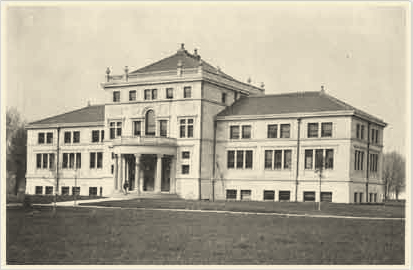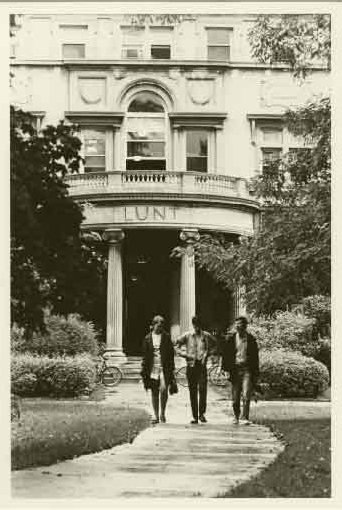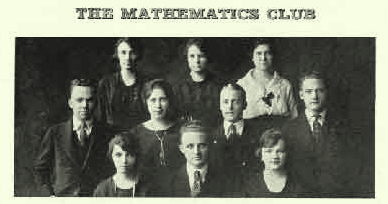EXCERPTS FROM A HISTORY OF THE DEPARTMENT OF MATHEMATICS AT NORTHWESTERN UNIVERSITY 1855-1905
Prepared by Thomas F. Holgate, originally published 1941 Arranged and Edited by Emily Kefferstan
The Curriculum

With the appointment in June 1888, of George Washington Hough as Professor of Astronomy and the completion of Dearborn Observatory in the following year, courses in Astronomy, which till then had been offered, if at all, in the department of Mathematics, were transferred to the new department.
 Graduate Courses Offered
Graduate Courses Offered
The Catalogue of 1894-95 first announced courses Primarily for Graduate Students. They were Theory of Functions and Substitution Groups by Professor White; Modern Higher Algebra, Higher Plane Curves, and an Advanced Couse in Modern Synthetic Geometry, by Professor Holgate. From that time forward there appears to have been an increased emphasis on graduate studies with a steadily increasing number of advance students, the courses being varied from year to year to meet the needs of the students registered.
During the year in 1894-95, Fanny Cook Gates, B.L., 1894, held a fellowship in Mathematics, the first to be awarded to the department. Her thesis for the Master’s degree in 1895 was “On the Construction of Curves of the Second Order from five elements, some of which are Imaginary.” Miss Gates continued her studies in Mathematics and Physics at Bryn Mawr College and in Göttingen, Germany, was Professor of Physics at Goucher College for ten years and a student at intervals under Rutherford in Montreal and Sir J.J. Thomson in Cambridge.
In 1896 a new Instructor appeared to take the place of Mr. Annis- Mr. Herbert Govert Keppel, a graduate of Hope College, Michigan, and a student at Clark University for the four years preceding his appointment at Northwestern. He remained with the department until 1908, except for the year 1900-01 when he was on leave of absence for further study at Clark, resulting in the PH.D. degree. In 1908 he was appointed Professor of Mathematics in the State University of Florida where he remained until his death in September 1918. The autumn of 1897 brought an additional Instructor in the person of Dr. Henry Freeman Stecker of the University of Wisconsin who remained with the department until 1900 when he received appointment at Cornell University. Mr. Burke Smith, a graduate of the University of Washington was Instructor during Dr. Keppel’s absence in 1900-01.
Class Rooms Occupied
For the first fourteen years of the work of the University, the mathematics class-rooms were in the first building erected which came later to be known as Old College and still later became the home of the school of education. With the erection of the University Hall and its occupancy in 1869, the rooms used by the mathematics department were on the first floor of that hall, at the left as one enters the south door, the large room No. 3, being the class-room and the smaller one, No. 4, the instructors’ office. It was in these rooms that Professor Kellogg, Professor Moore, and Professor White conducted classes and advised students. Many traditions linger there of the qualities and influence of those distinguished teachers.
In 1909 the office and class-rooms of the department were moved to Swift Hall of Engineering, newly constructed on a gift of Mr. Edward Swift and Mrs. Gustavus Swift, his mother, for the housing of Engineering, Physics, and Mathematics.

